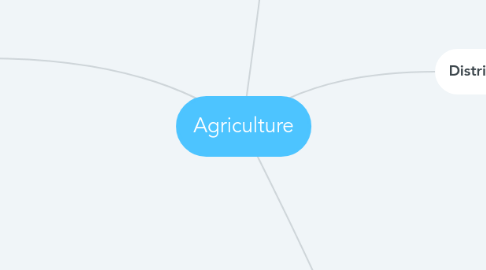
1. Origination of Agriculture
1.1. introduction of food & agriculture
1.1.1. invention of agriculture
1.1.1.1. agricultural revolution
1.1.1.1.1. environmental factors
1.1.1.1.2. cultural factors
1.1.2. agricultural hearts
1.1.2.1. southwest asia
1.1.2.2. east asia
1.1.2.3. central & south asia
1.1.2.4. sub-saharan africa
1.1.2.5. latin america
1.2. subsistence and commercial agriculture
1.2.1. definitions of types
1.2.2. differences
1.2.2.1. percentage of farmers
1.2.2.2. role of machinery, science & technology
1.2.2.3. farm size
2. Differences in Food Consumption
2.1. diet and food consumption
2.1.1. level of development
2.1.2. physical conditions
2.1.3. cultural preferences
2.1.4. total consumption of food
2.1.4.1. dietary energy consumption
2.1.4.2. grain
2.1.4.2.1. wheat
2.1.4.2.2. rice
2.1.4.2.3. maize
2.1.4.2.4. other crops
2.1.5. dietary energy needs
2.2. source of nutrients
2.2.1. food security
2.2.2. protein
3. Sustainability Challenges Faced by Farmers
3.1. losing agricultural land
3.1.1. loss of farmland to urbanization
3.1.2. desertification
3.2. improving agricultural productivity
3.2.1. intensification by subsistence farmers
3.2.1.1. new farming methods
3.2.1.2. shorter fallow periods
3.2.2. the green revolution
3.2.3. increased productivity in commercial farming
3.3. conserving agricultural resources
3.3.1. agriculture & water in california
3.3.2. sustainable land management
3.3.2.1. no tillage
3.3.2.2. ridge tillages
3.4. applying biotechnology to agriculture
3.4.1. genetically modified organisms (gmos)
3.4.1.1. health problems
3.4.1.2. export problems
3.4.1.3. increased dependence on US
3.5. global food trade
3.5.1. global trade patterns
3.5.2. drug trade
3.6. global agriculture & undernourishment
3.6.1. global scale of supply & demand
3.6.2. undernourishment
3.7. sustainable agriculture
3.7.1. organic farming
3.7.2. cleanliness of produce
3.7.3. government policies
4. Distribution of Agriculture
4.1. agricultural regions and climate
4.1.1. tropical
4.1.1.1. rainy
4.1.1.2. wet & dry
4.1.2. dry
4.1.2.1. semiarid
4.1.2.2. arid
4.1.3. warm mid-latitude
4.1.3.1. dry summer subtropical
4.1.3.2. humid subtropical
4.1.3.3. marine west coast
4.1.4. cold mid-lattitude
4.1.4.1. humid continental, warm summer
4.1.4.2. humid continental, cool summer
4.1.4.3. subarctic
4.1.5. polar
4.1.5.1. arctic
4.1.5.2. ice cap
4.1.5.3. highland
4.2. subsistence agriculture in dry regions
4.2.1. predominate regions in developing countries
4.2.1.1. intensive subsistence, wet-rice dominant
4.2.1.2. intensive subsistence, crops other than rice dominant
4.2.1.3. pastoral nomadism
4.2.1.4. shifting cultivation
4.2.1.5. plantation
4.2.2. predominate in developed counties
4.2.2.1. mixed crop and livestock
4.2.2.2. dairying
4.2.2.3. grain
4.2.2.4. ranching
4.2.2.5. mediterranean
4.2.2.6. commercial gardening
4.3. subsistence agriculture in tropical regions
4.3.1. plantations
4.3.2. shifting cultivation
4.4. subsistence agriculture in population concentrations
4.4.1. intensive subsistence agriculture
4.4.1.1. double-cropping
4.4.1.2. wet rice dominant
4.5. fishing
4.5.1. traditional fishing
4.5.2. aquaculture/aquafarming
4.5.3. fish production
4.5.4. fish consumption
4.5.5. overfishing
4.6. commercial agriculture: crop-based
4.6.1. grain farming
4.6.2. mediterranean agriculture
4.6.3. commercial gardening & fruit farming
4.6.3.1. also known as truck farming
4.7. commercial agriculture: mixed crop & livestock
4.7.1. definition and purpose
4.7.2. importance of access to markets
4.7.2.1. von thunen model
4.8. commercial agriculture: animal-based
4.8.1. dairy
